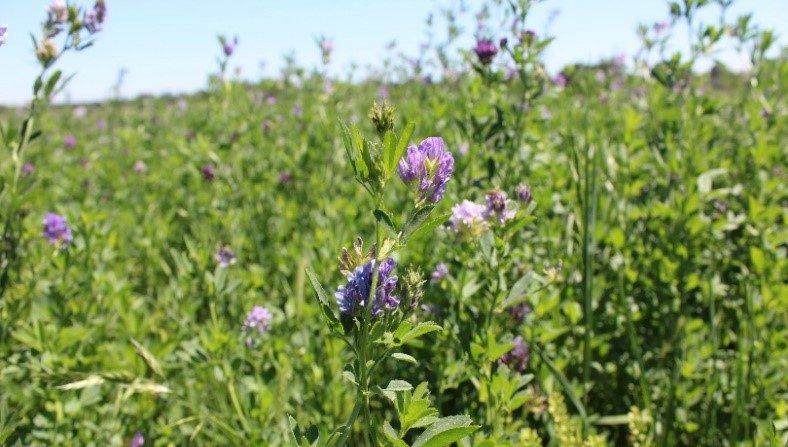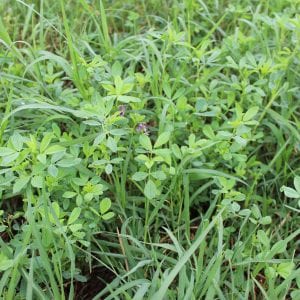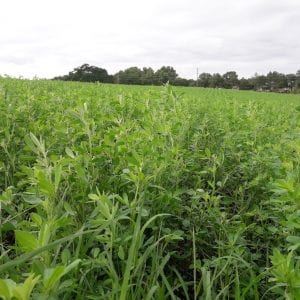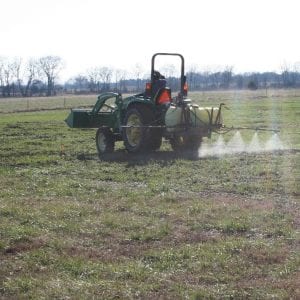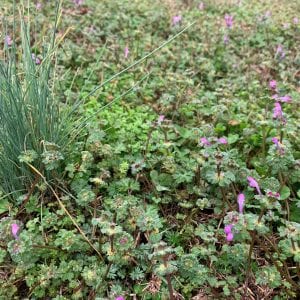Farming

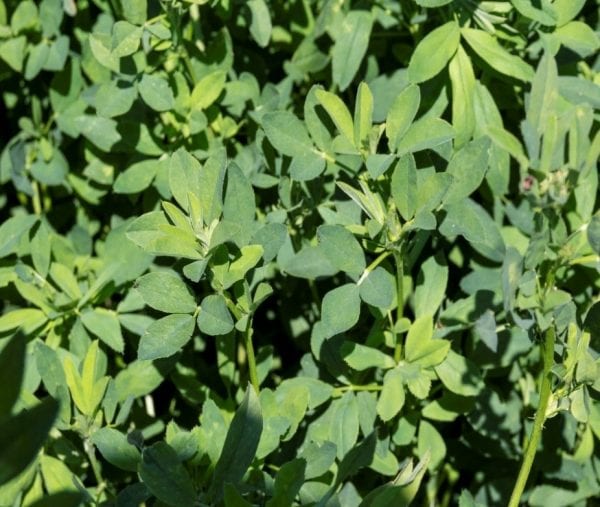 Alfalfa (Medicago sativa L.) is popularly known as the Queen of Forages because of its high forage nutritive value characteristics. Alfalfa is a high-yielding, perennial legume that is well-suited for hay, silage, baleage, and grazing management systems.
Alfalfa (Medicago sativa L.) is popularly known as the Queen of Forages because of its high forage nutritive value characteristics. Alfalfa is a high-yielding, perennial legume that is well-suited for hay, silage, baleage, and grazing management systems.
Alfalfa is one of the most widely grown forage crops in the United States with most production concentrated in the northern and western regions of the country. In the southeastern United States, there has been a decrease in alfalfa acreage during the last century because of constraints related to challenging weather conditions, pests, and disease pressure. Recently, forage breeding efforts and research associated with improved management strategies have increased the stand persistence ability of alfalfa. As a result, the crop is slowly returning to the Southeast.
Introduction
Alfalfa has compound leaves with three leaflets, purple flowers, a long taproot system, and grows to a height of 24 to 36 inches. Alfalfa requires well-drained, high-fertility soils for growth and has limited tolerance to pests, disease pressure, and prolonged drought conditions. In the Southeast, it is crucial to choose a well-adapted variety that tolerates higher temperatures, pests, and diseases. The choice of variety must also align with the proposed use of alfalfa in the system,
such as for hay production, grazing, or dual-purpose use. Several varieties are available that vary in forage yield potential and dormancy rating. Alfalfa varieties are ranked on a fall dormancy scale (table 1) based on when growth stops for each one in the fall.
Table 1. Fall Dormancy Scale of Alfalfa Varieties
Adapted from Alfalfa Management in Georgia. University of Georgia, 2015.
| Dormancy | Score | Notes |
|---|---|---|
| Very dormant | 1 | No fall or late-winter growth, very winter hardy |
| Dormant | 2, 3 | Little fall or late-winter growth, winter hardy |
| Moderate dormant | 4, 5, 6 | Moderate fall and late-winter growth, moderate winter hardy |
| Semidormant | 7, 8 | Fall and late-winter growth, not winter hardy |
| Nondormant | 9 | Good fall and late-winter growth, susceptible to winter conditions |
Alfalfa Varieties
Following are brief descriptions of some commercially available alfalfa varieties adapted for use in Alabama. Generally, varieties that have a dormancy score from 5 to 8 can be successful in the state, depending on the location. Consult your regional Extension agent for help with choosing a variety based on your site location and weather conditions.
‘Alfagraze’ was developed by Joe Bouton at the University of Georgia and released in 1990. It was the first southern variety adapted to grazing, and its Roundup Ready (RR) version has allowed better weed control. ‘Alfagraze’ 300 Roundup Ready (RR) is a commercialized, genetically modified alfalfa variety with good grazing tolerance. The ‘Alfagraze 600 RR’ has high nutritive value characteristics and is well adapted to grazing systems. It has high disease resistance to Fusarium wilt and root knot nematode, and it has a fall dormancy score of 6. It is also a Roundup Ready variety, allowing for easier control of weeds. Varieties that contain the Roundup Ready technology require farm registration and payment of a fee structure for technology use through the seed vendor.
Bouton also developed the ‘Bulldog’ variety, which is for dual-purpose use (hay or grazing management). ‘Bulldog’ 505 has a fall dormancy score of 5 and good disease resistance and drought tolerance. It grows well in northern Alabama. Similarly, ‘Bulldog’ 805 is a dual-purpose alfalfa variety. It can be used for hay production, grazing management, or wildlife food plots. This variety has a fall dormancy rating of 8, good disease and drought resistance, and grows well in southern Alabama. These varieties do not contain Roundup Ready technology.
Another variety adapted to the southeast region is HarvXtra. This variety was genetically modified for improved forage quality at maturity by reducing lignin content in the plant. This modification provides flexibility to growers by widening the cutting window, and it includes the RR technology. In comparison with conventional varieties, at 35-d harvesting interval, regional trials have reported up to 26 percent greater yield with 16 percent higher relative forage quality (RFQ) for HarvXtra.
Forage breeding efforts for alfalfa adapted to the Southeast continue in the region through both commercial and land grant university breeding programs. Find additional information on alfalfa varieties from the National Alfalfa and Forage Alliance at www.alfalfa.org.
Alfalfa can be planted in monocultures or mixed stands with grasses, such as bermudagrass. In the Southeast, there has been a growing interest in alfalfa- bermudagrass systems because of the complementary growth pattern of alfalfa with bermudagrass (figures 1 and 2), the similarity in site selection for successful stands, and the ability of alfalfa to contribute nitrogen (N) and improve the nutritive value of the system.
- Figure 1. Alfalfa ‘Bulldog’ 805 stands in late spring in south Alabama.
- Figure 2. Alfalfa-bermudagrass mixtures in summer in south Alabama.
Forage Establishment
Before planting, test soil pH and fertility. Take the soil sample at a 15-inch depth dividing the soil profile into two layers, surface (0 to 8 inches) and subsoil (8 to 15 inches). Because of its deep tap root system, alfalfa explores the subsoil layer, which may require pH correction at a greater depth than most commonly grown forages. Based on the results, apply recommended lime and phosphorus (P) and potassium (K) fertilizers to guarantee proper conditions for seed germination and establishment success. Soil pH is particularly important for alfalfa establishment and should range from 6.5 to 7.0 on the soil surface and be around 5.5 on subsoil.
A lime application must be done at least 6 months before planting to allow for soil incorporation and, in some cases, could take multiple applications/years to correct. If subsoil pH remains acidic, the application of gypsum (CaSO4) can be an alternative to help neutralize it. Adequate levels of boron (B) and molybdenum (Mo) are essential for nodule formation for biological nitrogen (N) fixation. Some varieties may already include base levels of these in the seed coat for establishment.
Consult your regional Extension agent for help in selecting an adapted alfalfa variety for your farm site and in purchasing seed in advance to guarantee its availability. Sowing alfalfa in a weed-free, well-prepared seedbed is crucial. Plowing, disking, and cultipacking should be done as needed before planting to incorporate lime and fertilizer and to ensure a firm seedbed for establishment. Conduct all heavy preparation a couple of months before planting, and then only lightly disk just before planting to control weeds. A good rule of thumb in a well-prepared area is that boot imprints should be no deeper than 1⁄4 inch after walking across the area. For alfalfa planting, use a properly calibrated no-till drill with a small seedbox for greater success; however, when broadcasting seeds, incorporation with a cultipacker should follow. Most seeds are pre-inoculated and require proper storage and handling to guarantee their quality. If seeds purchased are not inoculated, or inoculum viability is unknown, purchase inoculant (Type A, Rhizobium meliloti) and apply following label instructions. Alfalfa seeding rate is 20 to 25 pounds/ acre, depending on the seeding method, and seeds should be planted no more than 1⁄4 inch deep. See table 2 for seeding date windows for fall and spring planting in Alabama.
Table 2. Seeding Date Window for Fall and Spring Alfalfa Planting in Alabama
| Location/Planting Date | Seeding Date Window | Comments |
|---|---|---|
| North Alabama (Fall) | August 15 through October 1 | Requires 6 to 8 weeks of growth before first hard frost event |
| South Alabama (Fall) | October through November 1 | Requires 6 to 8 weeks of growth before first hard frost event |
| Spring Planting | Late February through April 1 | Weed control is crucial to avoid warm-season grasses outcompeting alfalfa |
Fertilization Management
After establishment, maintain soil pH in a range from 6.5 to 7 to ensure proper conditions for plant growth. Annual soil testing is needed to determine lime and fertilizer needs for the stand in the upcoming growing season and to allow for the timely application of nutrients. Alfalfa has a high nutrient requirement, especially under intensive management, such as during hay production when nutrient removal is high. A general recommendation is for every ton of alfalfa harvested to apply 12 pounds of phosphorus (P2O5) and 50 pounds of potash (K2O) per acre. Legumes and bacteria
(Rhizobium spp) have a symbiotic association that captures atmospheric nitrogen (N) and incorporates it into the soil as an organic form that plants can utilize—a process called biological nitrogen fixation. In a well-established stand, N requirements should be met through nitrogen fixation. Supplemental Mo and B are recommended yearly or every other year during the life of the stand. Visual assessment of the stand for nutrient deficiency symptoms and the periodic testing of plant tissue can help with identifying issues early in the plant growth cycle. For more information on how to collect plant tissue samples, contact your regional Extension agent or visit the Auburn University Soil, Forage, and Water Testing Laboratory.
Forage Production and Defoliation Management
Alfalfa forage yield typically ranges from 4 to 10 tons per acre annually. Under more intensive management and irrigation, it could exceed 14 tons per acre. The crude protein (CP) concentration ranges from 18 to 25 percent and total digestible nutrients (TDN) from 60 to 65 percent. Forage distribution usually encompasses April through September and October, depending on variety and weather conditions. In the Southeast, stand production longevity is generally expected to be 3 to 5 years.
In alfalfa monocultures, hay production is the most common defoliation method used. The recommendation for the timing of the first cutting in the first year of stand establishment is when alfalfa plants have reached or surpassed the 25 percent bloom stage to allow plants to grow and accumulate carbohydrate reserves. Subsequent harvests should occur at or near 10 percent bloom, which typically corresponds to a 28- to 35-day regrowth interval. Generally, the stubble height recommended is 4 inches. The last cutting will usually occur during the fall, depending on the site location and the first hard frost. The number of cuttings per season may vary and should be adjusted to your forage system to avoid depletion of the plant carbohydrate reserves, which represent the energy supply for regrowth after defoliation. For example, high intensity and frequency of defoliation can lead to a decrease in reserves and stand persistence because of plant death and thinning. In the southern United States, drying plant material in the field to a target of 15 to 18 percent moisture for hay might be challenging during periods of frequent seasonal rainfall. Producers may consider the use of a forage preservative when making alfalfa hay. If a producer is using a preservative, the crop should not exceed 20 percent moisture when drying for hay. Another alternative is to bale alfalfa for baleage, which has a moisture range of 40 to 60 percent. For more information on baleage production and feeding, refer to Extension publication ANR-2511, “Producing and Feeding Baleage in Alabama.”
Under grazing management, it is essential to use rotational grazing on a grazing-tolerant variety of alfalfa and implement strategies to avoid the potential for bloat in animals. In early spring, animals should be exposed for a short time to alfalfa pastures for adaptation and should have free access to hay to ensure rumen is full before turnout into pastures. Animals with an empty rumen should never be allowed into a pure stand of alfalfa because of the risk of bloat. Additionally, beef and dairy cattle may be provided with a feed supplement containing monensin (Rumensin or Bovatec), which may help improve digestion and reduce the incidence of bloat. To optimize forage mass, nutritive value, and stand persistence, use rotational grazing to allow plant regrowth until 10 percent bloom (10 to 16 inches high). The target stubble height for grazing should be 4 inches. Using short grazing periods helps to avoid damage to growing points, as this leads to stand loss. Strip grazing, an intensive rotational grazing method, consists of using temporary fencing to have animals graze an area for a short time and then progressively move forward throughout the pasture. This practice is also used to supplement animal diets with elevated forage quality feed or to expose animals progressively to specific feed that requires adjustment to avoid issues such as bloat. Another option would be to use first-last grazing that allows the animals with higher nutritional requirements to graze a given pasture area first to remove the higher quality forage and continue forward in the rotation. Then, a second group of animals with lower nutrient needs follows to complete the removal of forage mass.
Weed Control
Before establishment, the seedbed must be clean to limit weed competition and to optimize alfalfa growth. Newly planted areas should not have been treated with soil residual herbicides, such as GrazonNext, in the past 12 months. Perennial species, such as common bermudagrass, are particularly difficult to control after alfalfa is established, so it is crucial to eliminate these before planting with nonselective products such as glyphosate (figure 3).
Fall versus spring planting dates will determine the weed spectrum to which alfalfa seedlings are exposed. Spring-planted alfalfa will likely experience greater weed competition from the more aggressive warm-season grasses and broadleaves compared to a fall planting. Fall-planted alfalfa has the advantage of emerging after the threat of warm-season weeds as well as utilizing available moisture that typically occurs through the winter months. Annual grasses, such as annual ryegrass, are arguably the most aggressive cool-season competitors and may be controlled with clethodim (Select) or sethoxydim (Poast) while young and actively growing (figure 3).
- Figure 3. Controlling weeds before planting is essential.
- Figure 4. Control weeds when they are young and actively growing.
Weed management becomes more tedious after alfalfa establishment because of the higher risk of injury to the crop. Despite higher initial seed costs, Roundup Ready varieties reduce this risk and increase weed control efficiency. For conventional varieties, products that contain 2,4-DB (Butyrac), bromoxynil (Broclean), imazethapyr (Pursuit), or imazamox (Raptor) are good postemergence options for broadleaf weeds once alfalfa has reached at least the third trifoliate leaf or is about 4 to 6 inches tall (figure 4). In areas where alfalfa enters fall dormancy, other postemergence herbicide options, such as carfentrazone (Aim), metribuzin (TriCor), or hexazinone (Velpar) are available. Herbicide use is most effective when weeds are young and actively growing. Be aware of specific harvest restrictions associated with certain pesticides and always read and follow label instructions.
Pest Control
During the growing season, most insects on alfalfa stands are either beneficial or incidental and do not contribute to yield losses. Among beneficial insects are ladybugs, lacewings, predatory beetles, and parasitoids. However, it is recommended to regularly scout fields from green-up to the last cutting because in some years pest insects can occur in large populations requiring control. In the southeastern United States, important pests include alfalfa weevil, pea aphids, true armyworms and other caterpillar species, Japanese beetles, three- cornered alfalfa hoppers, blister beetles, leafhoppers, and grasshoppers. Weevils, aphids, and armyworms generally occur earlier in the growing season, which requires that scouting start in February. Beetles, leafhoppers, and caterpillars typically show up in May, and scouting should continue throughout the season. Generally, grasshoppers have periods of outbreaks in years following hot, dry weather, and producers should be vigilant throughout the spring and summer.
Scouting methods include the bucket or square foot method and the use of sweep nets. For the bucket method, collect a single stem at multiple areas throughout the entire field and beat them against the inside of a large bucket to dislodge any insects. Multiple stems can be done at once, but make sure to count how many stems you collected to calculate the insect pressure later. The square foot method is a useful tool for calculating insect pressure in a standardized unit to see if the field is at threshold and needs control. The easiest way to apply this method is to use a PVC pipe to build a square that measures one foot2 (1 foot × 1 foot). This square can then be used to sample multiple places in the field and quantify insect pressure within the square. For the sweep net method, walk through the field taking 10 to 20 sweeps through the foliage, ensuring that you are swinging hard enough that foliage ends up in the net. Otherwise, insects will not be dislodged, and counts will be underestimated. One full figure-8 motion consists of one sweep and the average number of insects per sweep can be determined for threshold purposes.
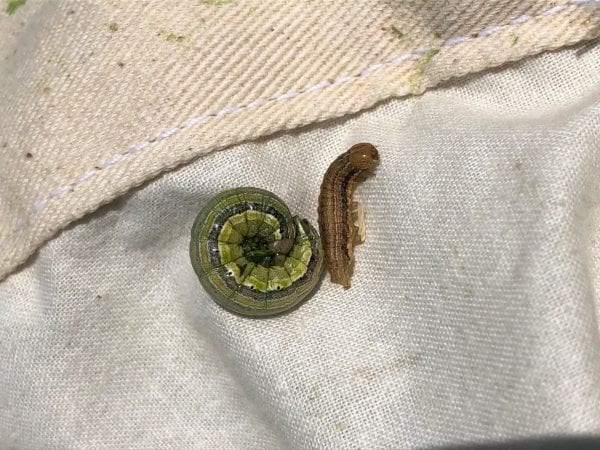
Figure 5. True armyworms caught in a sweep net.
Several caterpillars can infest alfalfa. The most consistent species in the south are the true armyworms (figure 5), but corn earworm, fall armyworm, yellow- striped armyworm, and beet armyworm can also be a problem. The types of caterpillars and population numbers will vary each season and depend on many factors. For the first week and a half of their lives, caterpillars are not eating much foliage. They cause the most damage in the last few days before moving down into the soil to pupate and change into adults. Therefore, it is important to find any sizable populations before they cause significant damage; bigger caterpillars are much harder to control with available pesticides. The best way to monitor caterpillar populations is by using a sweep net regularly in multiple places throughout the field. If caterpillars are present in the net, use a square foot measuring tool to sample the foliage. If there are 2 to 3 caterpillars per square foot, treatment is likely warranted.
Blister beetles are not as common as other pests and have a distinct elongated body shape with a narrow neck and broad head (figure 6). Their antennae are only about one third the length of their body, which distinguishes them from another group of beetles that is not a pest, the long-horned beetles. Blister beetles come in various colors, and approximately six species are associated with alfalfa in the South.
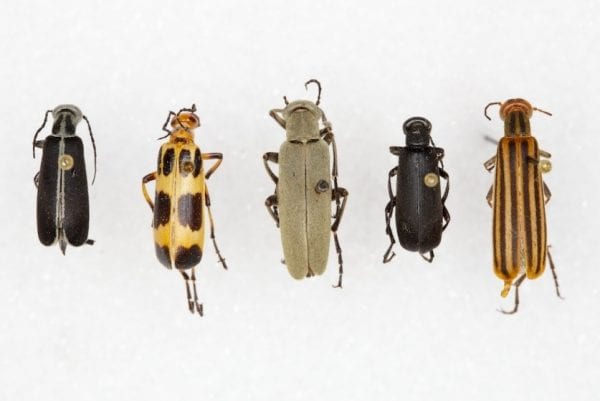
Figure 6. Multiple species of blister beetles. (Photo credit: Pat Porter, Texas A&M Agrilife Extension).
Blister beetles may sometimes swarm and cause defoliation, but yield loss is not the primary concern. These beetles get their name because when consumed they can cause skin blistering on humans and animals. They possess a protective chemical, cantharidin, which is squeezed from their leg joints. If blister beetles are present in hay, become crushed, or otherwise exude cantharidin and that hay is consumed by livestock, it can lead to internal blistering and inflammation in the animals. While all species of blister beetles produce cantharidin, the chemical content varies among species, individuals within a species, and locations. This makes it difficult to provide an accurate number of how many beetles are toxic to animals. The age, size, breed, and overall health of an animal can play a role in how susceptible they are to cantharidin. Horses are the most susceptible, while sheep and cattle are more tolerant. A wide range of 20 to 300 beetles can potentially be lethal, but even a few beetles can cause colic in horses. While there is little research on the toxicity to animals, cantharidin may reduce the digestibility of the hay, which will have indirect effects on livestock.
The key to blister beetle management is understanding the proper identification of these beetles. If you produce or buy hay with beetles present, do not feed it to livestock. If you are not growing your own alfalfa, be familiar with the suppliers and their management practices. If you are growing your own alfalfa and there is an infestation, the beetles may swarm as they are disturbed during harvest. If this occurs, the beetles can be crushed or otherwise harvested with the hay. Watch carefully and stop harvesting until the beetles disperse. Insecticide treatment may be necessary, and the killed beetles should not be picked up by harvest equipment. Recheck the field immediately before harvest. Other management options include harvesting the alfalfa before or soon after it blooms, as blister beetles are attracted to flowering plants, and controlling weeds in the field that may be hosts for the beetles. More information about control recommendations can be found in Alabama Extension’s IPM-0978, “Alfalfa Insect and Weed Control Recommendations.”
Summary
Alfalfa is a high-yielding perennial legume with high forage quality and crude protein characteristics. It is widely planted across the United States, but over time, weather constraints and pest and disease pressure decreased its production in the Southeast. Forage breeding and improved management strategies are slowly bringing alfalfa back to the southeastern region and incorporating it into forage systems for hay production or under grazing management. Understanding best practices for establishment and management are required to guarantee the feasibility of alfalfa systems and assure its longevity and profitability.
Supplemental Resources
Ball, D.M.; Hoveland, C.S.; Lacefield, G.D. 2015. Southern Forages: Modern concepts for forage crop management, 5th edition. International Plant Nutrition Institute. Peachtree Corners, GA.
Hancock, D.; Buntin, G.D.; Ely, L.O.; Lacy, R.C; Heusner, G.L.; Stewart Jr., R.L. 2015. Alfalfa Management in Georgia. Athens, University
of Georgia. Available at https://secure.caes.uga.edu/extension/ publications/files/pdf/B%201350_3.PDF
Lacefield, G.; Ball, D.; Hancock, D.; Andrae, J.; Smith, R. 2009. Growing alfalfa in the South. Available at https://www.alfalfa.org/pdf/ alfalfainthesouth.pdf
Nichols, K. 2020. Alfalfa IPM 0978 – insect pest management. Available at https://www.aces.edu/blog/topics/crop-production/alfalfa-ipm-guide/
Download a PDF of Alfalfa Establishment and Management, ANR-2687.


